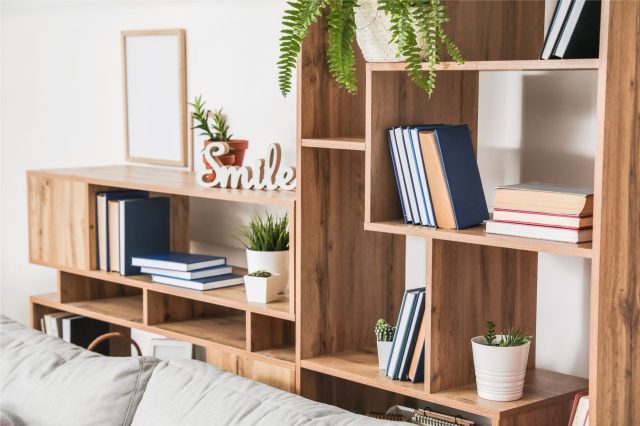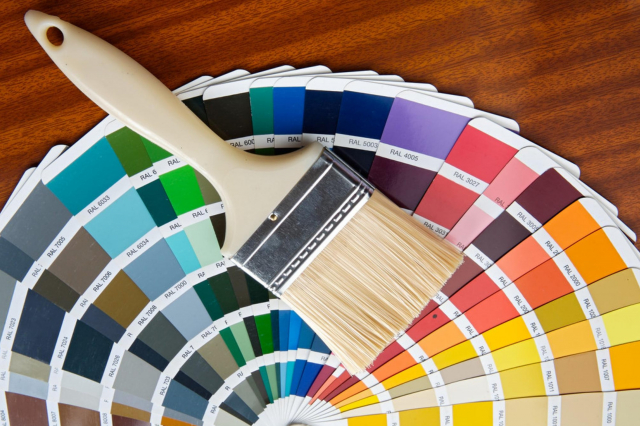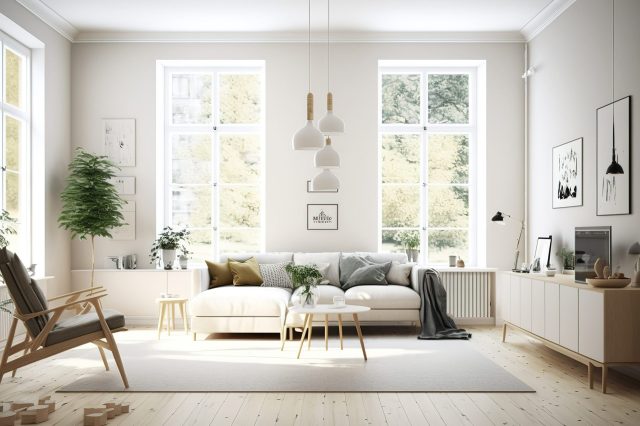The Hidden Benefits of Painting Your Rental Property – Landlords Take Note!
Smart Painting Tips to Maximize Your Rental Property Income
Making sure your rental properties look great is essential if you’re a landlord who wants to attract and retain tenants or find new ones.
One of the easiest and most affordable ways to give a rental unit a facelift is with a fresh coat of paint.
This guide offers plenty of useful suggestions to help you spruce up your properties without spending too much cash.
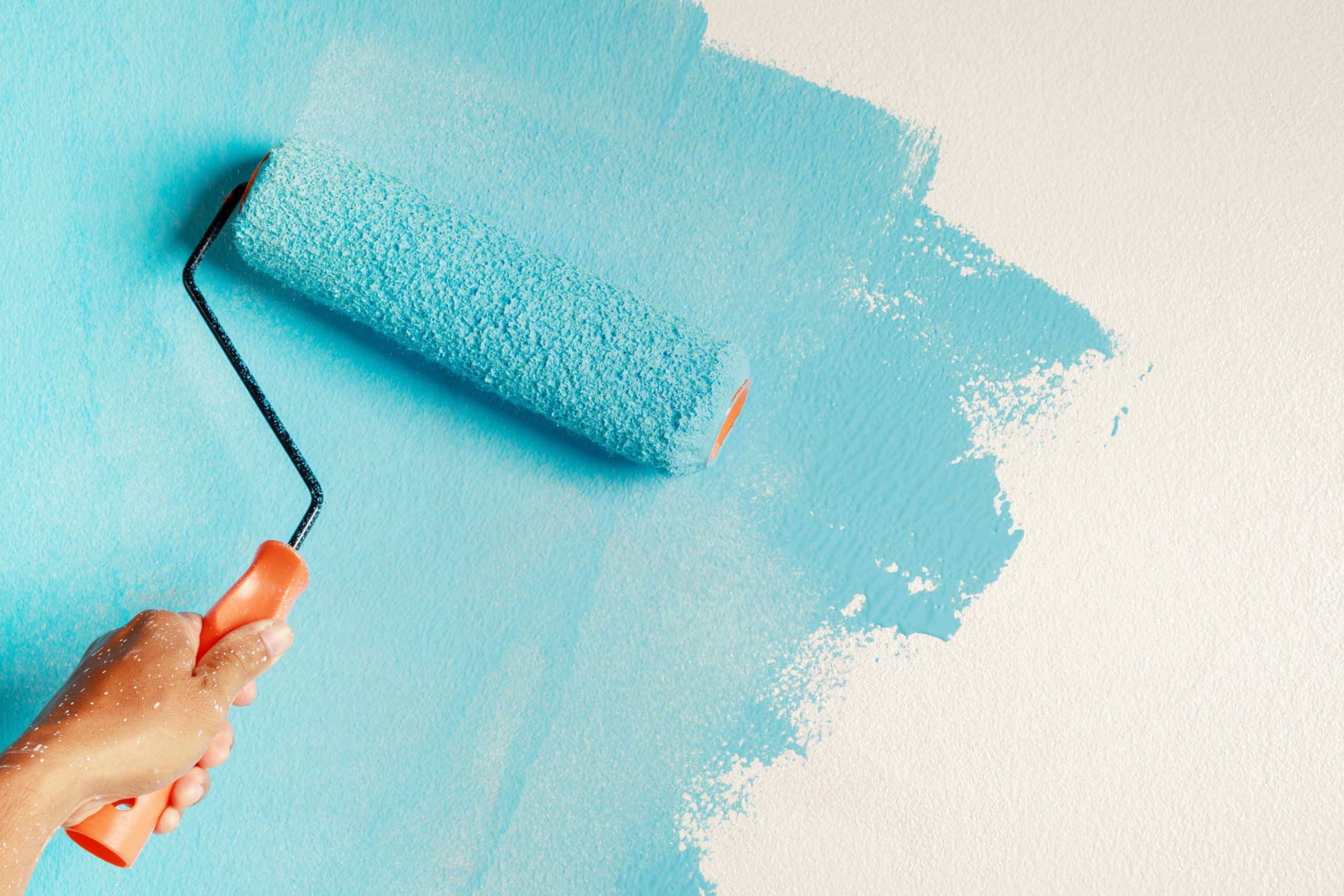
Credits: Vista Create
Table of Contents
The Plus Side of Painting Your Rental Property
Giving your rental property a fresh coat of paint can work wonders:
1. Visual Appeal: A new paint job can turn your property into a clean, inviting home.
2. Boosted Value: Did you know interior painting can actually increase your property’s worth? The National Association of Realtors’ Remodeling Impact Report suggests that it has a cost recovery rate of about 107%. That means you’re likely to gain more than you spent when it’s time to sell.
3. Happy Tenants: Keeping your property well-painted shows your tenants that you care. This can lead to happier tenants who stick around for longer.
Let’s Find the Perfect Paint!
Neutral Colors
How about considering neutral colors like beige, gray, or white?
Not only do these colors make spaces look larger and more welcoming, but they also appeal to a wide variety of tenants. It’s a win-win!
Durability
We know that a home is a place of constant activity, so it’s worth investing in high-quality, durable paint.
Finishes like semi-gloss and satin are your friends here – they’re durable and super easy to clean.
Low VOC and Eco-Friendly Options
Choosing low VOC (volatile organic compounds) and eco-friendly paints is a great idea.
It’s not just good for our planet, but it’s also healthier for your tenants.
Plus, these paints have minimal odor and are crafted with sustainable materials.
Let’s Talk About Professional vs. DIY Painting
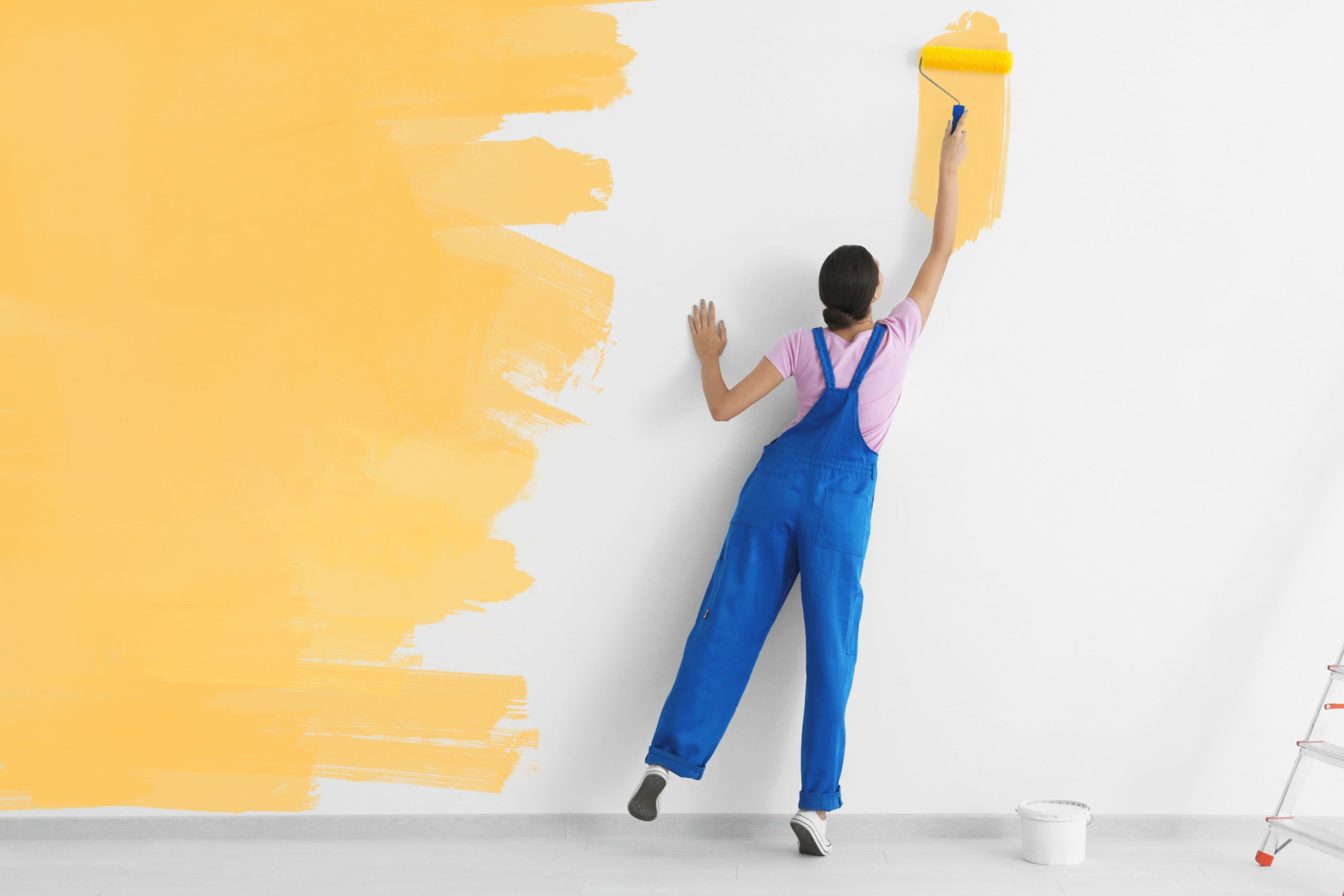
Credits: Vista Create
DIY Painting
If you’re someone who loves to roll up their sleeves and has the skills to get a great result, DIY painting is for you.
Not only can you save on labor costs, but you’ll also get to enjoy a bit of creative time. However, do remember it requires a fair bit of your time.
And don’t forget, a good paint job starts with a clean, repaired, and primed wall.
Professional Painting
Thinking about getting a flawless finish and saving time? Going with professional painters is a great choice!
They’ve got the expertise and all the right tools to get the job done efficiently.
This is especially handy if you need to quickly freshen up your place before new tenants move in.
Easy DIY Painting Tips
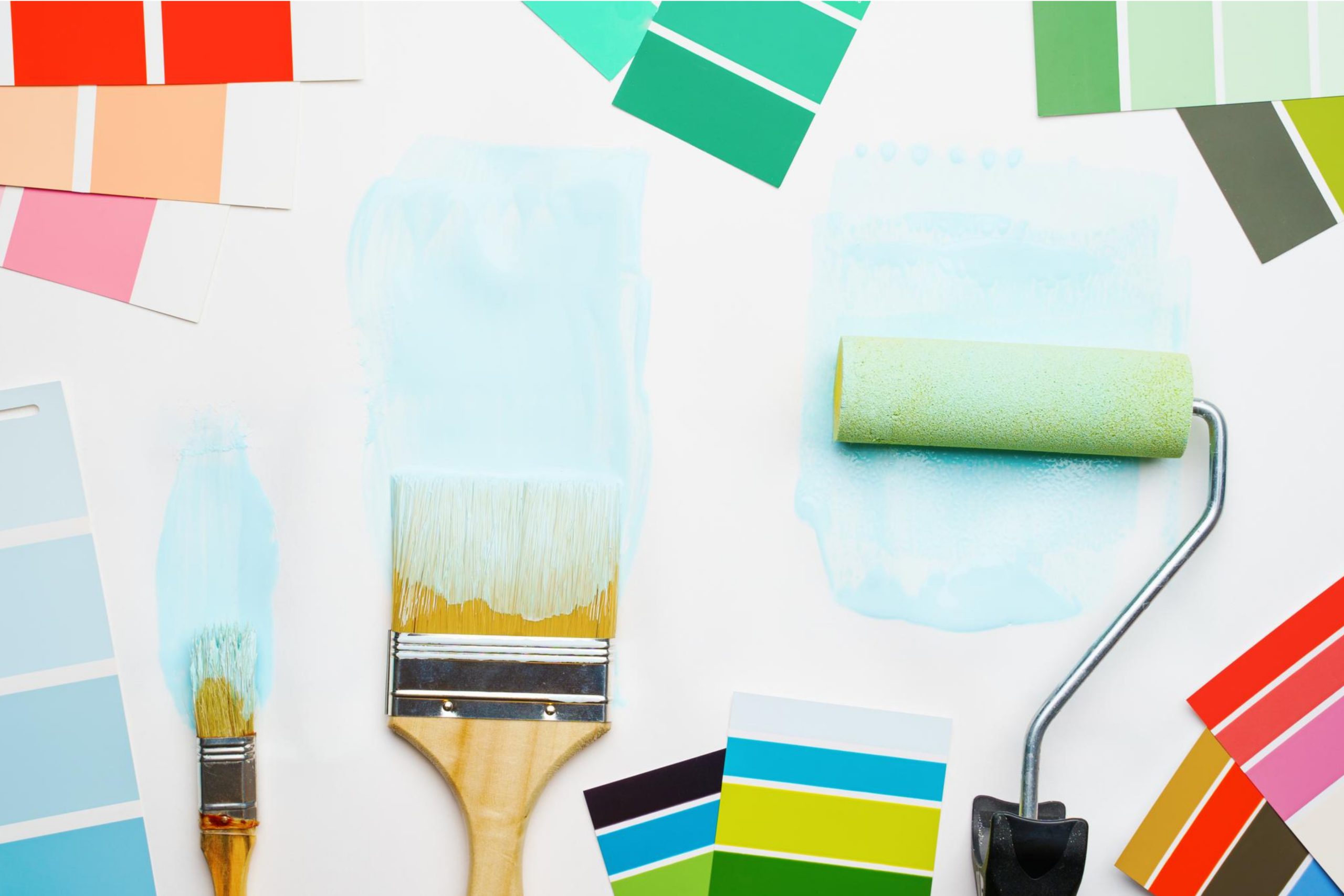
Credits: Vista Create
Preparation
To ensure your paint job lasts and looks fantastic, take some time to prep your walls.
This means cleaning them up, fixing any damage, and using a primer if needed.
Tools
A little investment in high-quality brushes, rollers, and painter’s tape can make all the difference in achieving that professional touch.
If you’re looking for a comprehensive guide on DIY painting, from novice to pro, check out our “Home Hues Ultimate Guide to DIY Painting + Printables.”
Paint Samples
Before you dive in with a full paint job, why not test out a few paint samples on your walls?
It’s a great way to see how different colors play under various lighting conditions.
Accent Walls
Fancy a bit of drama without going all out? Try creating an accent wall with a bold color.
It’s a simple yet effective way to add a dash of character to your space.
Savvy Painting Techniques Without Breaking the Bank
1. High-Coverage Paints: To save on both paint and effort, opt for paints that cover more area with fewer coats.
2. Efficient Tools: Make the most of your paint by using rollers for large areas and brushes for the finer details.
3. Planning: Avoid paint surplus by calculating the exact amount of paint you’ll need. Measure your space and don’t hesitate to ask for advice from the experts at your local paint store.
4. Bulk Buying: If you’re looking to paint multiple rooms or properties, consider buying paint in bulk for some sweet savings.

Credits: Vista Create
Legal Requirements
While there are no federal laws requiring landlords to paint between tenants, some cities have specific requirements.
For example, New York City mandates that landlords of multiple-dwelling buildings must paint every three years.
Always check local regulations to ensure compliance.
Additionally, landlords must notify tenants about the presence of lead-based paint if the property was built before 1978.
Timing is Everything!
Spring and Fall are the ideal seasons for painting due to moderate temperatures and minimal rainfall. Paint cures properly in these conditions.
In summer, high temperatures can cause paint to dry too quickly, leading to uneven application and potential cracking.
Indoor painting in winter is feasible with adequate heating, and painters may offer lower rates during this off-peak season.
For a more comprehensive guide on seasonal maintenance, check our article here.
Engaging with Tenants
When it comes to engaging with tenants, there are a few key strategies.
Offering tenants a choice from a pre-approved palette of colors can make them feel more at home and potentially encourage longer tenancies.
It’s also vital to keep tenants informed about the painting schedule and any disruptions it might cause.
Clear communication can help minimize inconvenience.
Lastly, after the painting is completed, it’s beneficial to seek tenant feedback. This can not only improve future projects but also demonstrate to tenants that their input is valued.

Credits: Vista Create
Understanding Paint Finishes
1. High Gloss: Durable and easy to clean, ideal for doors, trims, and cabinets.
2. Semi-Gloss: Suitable for bathrooms and kitchens due to its moisture resistance and ease of cleaning.
3. Satin: Has a velvety finish, good for high-traffic areas like family rooms and hallways.
4. Eggshell: Hides imperfections well, suitable for dining rooms and living rooms.
5. Flat/Matte: No shine, good for hiding wall imperfections but harder to clean.
Cost-Effective Painting Projects
One effective strategy is to consider a room-by-room painting approach.
It’s about spotlighting those areas that see a lot of foot traffic like your living room, kitchen, and hallways.
Read more about how to boost your property value in our full guide here.
Since these spaces are more likely to show signs of wear and tear, focusing on them keeps your home looking spick and span.
On the flip side, rooms that don’t see a lot of action, like your storage or laundry room, might just need a bit of a touch-up.

Credits: Vista Create
If you want to jazz things up a bit, just add an accent wall. It’s as simple as choosing one wall and going bold with a contrasting color.
Not only does this add a contemporary feel to your place, but it’s also easier and uses less paint than coating the whole room.
It’s a clever way to create a focal point and sprinkle a bit of personality into the room.
And here’s a final tip: give your cabinets and doors a fresh coat of paint. Over time, they can start to look a little tired and discolored from all the use they get.
Budget Planning for Painting Projects
1. Accurate Estimates: Obtain detailed quotes and estimates for the job, including labor, materials, and any additional costs like repairs or preparation work.
2. Reserve Funds: Always have a contingency fund of around 10-15% of the total budget to cover unforeseen expenses.
3. Track Expenses: Keep a record of all expenditures to help in future budgeting and to ensure you remain within your planned budget.
Final Thoughts
Painting is a cost-effective way for landlords to maintain and enhance their rental properties.
By choosing the right colors and finishes, preparing the surfaces properly, and deciding between DIY and professional painting, landlords can ensure their properties remain attractive and habitable.
Investing in painting not only boosts property value but also enhances tenant satisfaction and retention.
Remember to keep up with maintenance, legal requirements, and tenant engagement to maximize the benefits of your painting projects.
Ever wished paint sampling was as easy as sticking a sticker? Guess what? Now it is! Discover Samplize's unique Peel & Stick samples. Get started now and say goodbye to the old messy way!
Get paint samples




Frequently Asked Questions
⭐How often should landlords paint their rental properties?
It's generally recommended every three to five years, depending on paint quality and wear. New York City, for instance, requires painting every three years for multiple-dwelling buildings.
⭐What are the benefits of painting a rental property?
Painting enhances aesthetic appeal, increases value, and shows tenants that maintenance is a priority. It has a cost recovery rate of about 107%, often recouping more than its cost upon resale.
⭐What colors are best for painting rental properties?
Neutral colors like beige, gray, and white are ideal. They appeal to a wide range of tenants, make spaces look larger, and are easier to touch up between tenancies.
⭐Should landlords hire professional painters or do the painting themselves?
DIY painting saves on labor costs but requires time and proper preparation. Hiring professionals ensures a high-quality finish and is useful for quick turnovers.
⭐What should landlords consider when choosing paint for rental properties?
Consider durability, ease of cleaning, and environmental impact. Semi-gloss and satin finishes are durable and easy to clean. Low VOC and eco-friendly paints are healthier for tenants and the environment.
⭐Are there any legal requirements for landlords to paint rental properties?
No federal laws mandate painting between tenants, but local regulations vary. For example, New York City requires painting every three years. Check local laws and notify tenants about lead-based paint if the property was built before 1978.



